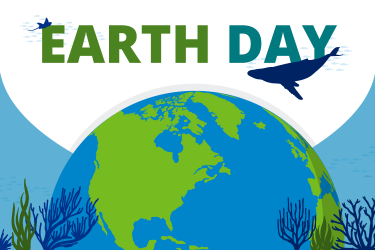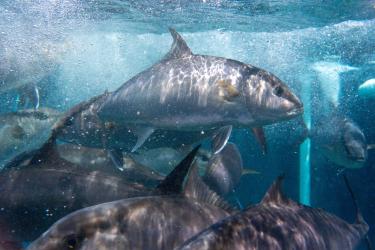Today, NOAA Fisheries announced the publication of a peer-reviewed self-assessment that shows the standards of the United States fishery management system under the Magnuson-Stevens Act more than meet the criteria of the United Nation’s Food and Agriculture Organization’s ecolabelling guidelines. These same guidelines serve as a basis for many consumer seafood certification and ranking schemes. The assessment demonstrates that the U.S. fisheries management system is particularly strong when considering responsiveness and science-based criteria. Beyond the biological and ecosystem criteria, the assessment also pointed out that the U.S. system incorporates the social and economic components of fisheries essential for effective long-term stewardship.
This assessment was authored by Dr. Michelle Walsh, a former NOAA Fisheries Knauss Fellow and current member of the Marine Science Faculty at Florida Keys Community College. Walsh evaluated the sustainability of how U.S. federal fisheries are managed using the FAO’s Guidelines for the Ecolabelling of Fish and Fishery Products from Marine Capture Fisheries. These guidelines are a set of internationally recognized criteria used to evaluate the sustainability of fisheries around the world.
“While the performance of U.S. fisheries clearly illustrates that the U.S. management system is effective, my colleagues and I wanted to evaluate the U.S. approach to fisheries management as a whole against these international guidelines for ecolabelling seafood,” said Walsh.
Walsh found that the U.S. federal fisheries management system meets all of the FAO guidelines for sustainability. In particular, the assessment highlighted some key strengths of the U.S. system (represented by white/green dots on infographic) including:
-
Complying with national and international laws.
-
Developing and abiding by documented management approaches with frameworks at national or regional levels.
-
Incorporating uncertainty into stock reference points and catch limits while taking actions if those limits are exceeded.
-
Taking into account the best scientific evidence in determining suitable conservation and management measures with the goal of long-term sustainability.
-
Restoring stocks within reasonable timeframes.

Evaluating Sustainability
“Sustainability” is about meeting the needs and wants of current generations without compromising those of future generations (WCED, 1987; United Nations, 1987). However, evaluating sustainability can become considerably more complex in the context of wild-caught fisheries in the dynamic ocean environment, where population trends and environmental conditions are often unclear or unknown.
Due to this complexity, many certification schemes assess sustainability on a fishery-by-fishery basis by evaluating discrete management approaches (such as gear type) and current stock status at a snapshot in time. This assessment, on the other hand, evaluates the U.S. management system as a whole against the FAO guidelines for ecolabels. It evaluates the capacity of the management system to respond to changes in stock levels and adapt to changing conditions via management measures that maintain sustainability over the long-term.
The Assessment
Dr. Walsh notes, “While the U.S. fishery management system is built on many of the same sustainability principles measured by these ecolabelling and certification schemes, managers have wrestled with how to apply these static evaluation approaches to the dynamic management system we use in the United States.”
To address this challenge, Walsh and her colleagues used a functional evaluation method capable of cross-walking the FAO guidelines to the U.S. federal fisheries management system. This method enabled the authors to assess whether or not the U.S. management system produces biologically-sustainable and well-managed fishery resources, according to the FAO guidelines.
While the assessment demonstrated the U.S. system meets FAO guidelines and highlighted its strengths, the assessment also highlighted some areas for improvement, including:
-
Addressing nationwide implementation of ecosystem-based approaches to management.
-
Incorporating broader food web considerations within individual fish stock management schemes.
-
Considering long-term changes in productivity.
These areas are the focus of discussions among fisheries scientists and managers as the United States continues to advance and improve upon its dynamic science-based management system.
After NOAA Fisheries completed its assessment on the sustainability of U.S. federal fisheries management, we contracted the Center for Independent Experts (CIE) to independently validate the assessment’s approach and detect any bias within NOAA Fisheries’ self-assessment. The CIE reviewers independently conducted the same assessment of U.S. federal fisheries management using the functional evaluation method developed by NOAA Fisheries. Dr. Walsh and her colleagues compared the four assessments conducted by both NOAA Fisheries and the CIE reviewers and found they were generally in agreement. The results, summarized below, are based on the average of the four independent assessments, one conducted by NOAA Fisheries’ and three from the independent CIE reviewers.
Learn More
Overfishing and Overfished Numbers at Historic Lows Under U.S. System
Under the Magnuson-Stevens Fishery Conservation and Management Act (MSA), the United States has invested in a rigorous, science-based management system that prevents overfishing and rebuilds overfished fisheries. The U.S. system is a dynamic approach to fisheries management that applies the principles of long-term sustainability to all U.S. federal fisheries through routine scientific monitoring, accountable management measures, and enforced compliance. Over the past 40 years, the U.S. system has experienced wide-ranging success. Overfishing and overfished numbers are at historic lows and a record number of stocks have been rebuilt—39 since 2000.
How Does the U.S. Federal Fisheries Management System Work?
Under the Magnuson-Stevens Act, NOAA Fisheries is responsible for the sustainable harvest, conservation, and protection of living marine resources in the U.S. Exclusive Economic Zone. The Magnuson-Stevens Act established a management structure wherein fisheries are divided among eight regional fishery management councils. The council process ensures that the Magnuson-Stevens Act is implemented in a manner consistent with the environmental and socio-economic characteristics unique to each region. Council members are nominated by state governors and appointed by the Secretary of Commerce. Members represent state management agencies, commercial and recreational industries and stakeholders, conservation organizations, and scientific and academic organizations, as well as the NOAA Fisheries’ management and science programs. Through a public process, the councils develop fishery management plans that are approved and implemented by the Secretary of Commerce in accordance with the Magnuson-Stevens Act.
References
United Nations. 1987. Report of the World Commission on Environment and Development, General Assembly Resolution 42/187, 11 December 1987.
WCED. 1987. Our Common Future. Report of the World Commission on Environment and Development, Published as Annex to General Assembly document A/42/427, Development and International Co-operation: Environment, August 2.



